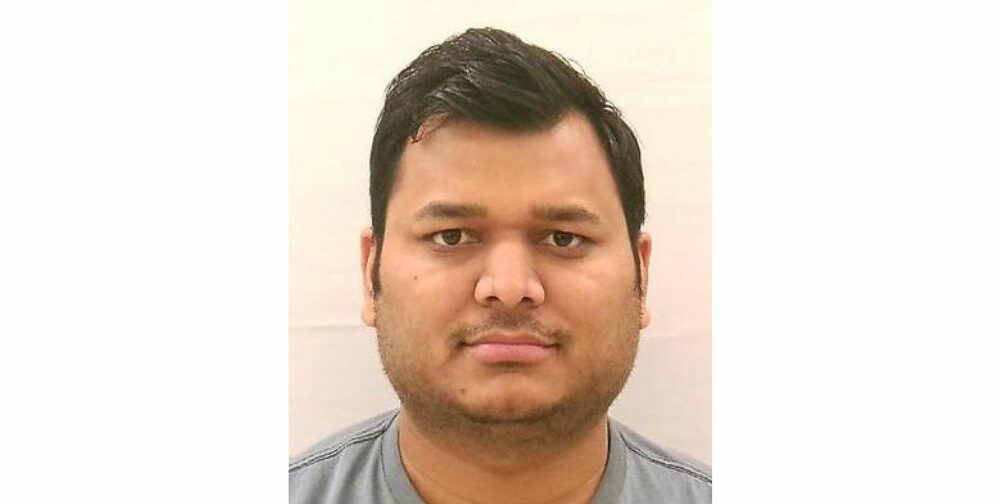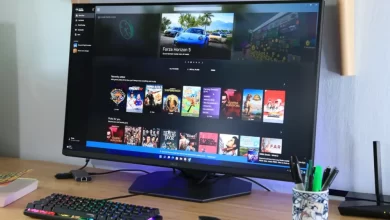From Tinkering to Tech Titans: The Inspiring Journey of Hitesh P. Rai, Firmware Engineer at Apple Inc.

In an age where technology evolves at lightning speed, it takes a unique blend of passion, expertise, and relentless curiosity to stand out in the field of firmware engineering. Hitesh P. Rai, a firmware engineer at Apple Inc., exemplifies these qualities. With a journey that spans continents and a career marked by significant contributions to the tech world, Hitesh’s story is a testament to dedication and innovation. In this exclusive interview, we delve into Hitesh’s professional journey, uncovering the experiences and insights that have shaped his path.
Q1: What sparked your interest in firmware engineering, and how did you begin your career?
A. My interest in firmware engineering began during my undergraduate studies at Mumbai University. I was fascinated by the idea of writing code that directly interacts with hardware, creating seamless integrations that power everyday devices. This curiosity led me to pursue a Bachelor of Engineering in Electronics. After graduation, I joined T-Star Instrumentation in India as a Technical Assistant II, where I tested and optimized process control instruments. This role gave me hands-on experience with firmware and reinforced my passion for the field. The real turning point came when I decided to pursue a Master’s degree in Electrical Engineering at the University of Texas at Arlington, which provided me with advanced knowledge and opened up new opportunities in the tech industry.
Q2: Your resume highlights a range of skills and experiences. How did your time at Owlet Baby Care shape your expertise in firmware engineering?
A. My tenure at Owlet Baby Care was instrumental in honing my firmware engineering skills. I started with the Smart Sock project, where I architected and implemented features for Smart Sock 3, focusing on wireless charging, BLE communication, and logging. This role involved extensive hands-on coding in C and running an RTOS, as well as developing unit and integration tests to ensure the reliability of the firmware. I also took on the challenge of redesigning manufacturing tests to save costs and improve product reliability, which involved providing on-site support to set up and debug processes both domestically and internationally. These experiences taught me the importance of meticulous planning, testing, and cross-functional collaboration, which are crucial in firmware development.
Q3: Can you elaborate on the challenges you faced during the Smart Sock project and how you overcame them?
A, The Smart Sock project presented several challenges, particularly in ensuring reliable wireless charging and communication. One major hurdle was developing a cost-effective replacement BLE module. This required not only firmware development but also creating test fixtures for manufacturing. To overcome these challenges, I focused on thorough research and continuous testing. Implementing unit and integration tests in Python and C helped catch issues early in the development process. Additionally, analyzing field data using BigQuery allowed me to identify and address customer issues promptly. Collaboration with the manufacturing team was also crucial, as it ensured that the firmware was robust and reliable for mass production.
Q4: How did your role at Apple Inc. enhance your expertise, particularly in UEFI architecture and manufacturing support?
A. Joining Apple Inc. as an Embedded Software Engineer was a significant milestone in my career. At Apple, I gained in-depth knowledge of UEFI architecture and associated tools through self-study and practical experience. I led the successful porting and board bring-up of UEFI/EDK II firmware to new hardware platforms and developed custom UEFI drivers and modules to optimize firmware performance and compatibility. Additionally, I took on the role of DRI (Directly Responsible Individual) for hardware product builds, where I implemented new features and debugged issues such as SD Card problems, ensuring the factory could proceed with builds without delays. This role enhanced my problem-solving skills and deepened my understanding of firmware’s critical role in hardware manufacturing.
Q5: What are some key projects or achievements at Apple that you are particularly proud of?
A. One of my key achievements at Apple was successfully porting UEFI/EDK II firmware to new hardware platforms, which involved developing custom drivers and modules. This project required a deep understanding of both hardware and firmware, as well as meticulous attention to detail. Another significant achievement was my role in manufacturing support, where I acted as the DRI for hardware product builds. Implementing new features and resolving critical issues like SD Card problems were challenging but ultimately rewarding experiences. These projects not only showcased my technical skills but also my ability to collaborate with cross-functional teams to achieve common goals.
Q6: How did your experience as an Electrical Engineering Intern at Apple shape your early career?
A. My internship at Apple was a foundational experience that significantly shaped my early career. During this time, I designed and developed a universal UART Sniffer using a PIC32 microcontroller. This project involved everything from part selection and schematic capture to firmware development and testing. Writing firmware in C with features like auto baud detection and voltage level detection was a challenging yet enriching experience. This internship not only enhanced my technical skills but also taught me the importance of a holistic approach to engineering, where attention to detail in design, development, and testing is crucial for successful project outcomes.
Q7: Can you discuss your technical skills and how they contribute to your effectiveness as a firmware engineer?
A. My technical skills are the backbone of my effectiveness as a firmware engineer. Proficiency in languages like C and Python allows me to write efficient, reliable code for various microcontrollers, including nRF51/nRF52, MSP430, and STM32. I am well-versed in tools such as Git, Make, and CMake, which are essential for version control and build management. My experience with UEFI/EDKII and development environments like VS Code and PyCharm enables me to tackle complex firmware challenges. Additionally, my understanding of communication protocols (UART, SPI, I2C), wireless technologies (BLE), and IoT (AWS IoT Core, MQTT) allows me to create integrated, high-performance firmware solutions. My ability to use debugging tools like logic analyzers and oscilloscopes ensures that I can identify and resolve issues effectively.
Q8: How do you approach learning new technologies or tools in your field?
A. My approach to learning new technologies or tools is driven by curiosity and a commitment to continuous improvement. I start by researching and understanding the fundamentals of the new technology, often through online resources, documentation, and tutorials. Hands-on experimentation is crucial, so I set up small projects to apply what I’ve learned in a practical context. For instance, when I needed to learn about UEFI architecture at Apple, I engaged in self-study and hands-on projects to gain a deep understanding. I also believe in leveraging community resources, such as forums and open-source projects, to gain insights and best practices from other professionals. This proactive and hands-on approach ensures that I stay updated with the latest advancements in firmware engineering.
Q9: What motivates you to excel in the field of firmware engineering?
A. My motivation to excel in firmware engineering comes from a deep-seated passion for technology and innovation. I am driven by the challenge of creating seamless integrations between software and hardware that power everyday devices. The opportunity to work on cutting-edge technologies and contribute to products that impact millions of users worldwide is incredibly fulfilling. Additionally, the constant evolution of the tech industry keeps me engaged and eager to learn. Knowing that my work can make a tangible difference in enhancing the functionality and reliability of products motivates me to continuously improve my skills and strive for excellence in every project.
Q10: What advice would you give to aspiring firmware engineers?
A. For aspiring firmware engineers, my advice is to cultivate a strong foundation in both hardware and software. Understanding the intricacies of microcontrollers, communication protocols, and embedded systems is crucial. Hands-on experience is invaluable, so engage in projects that challenge you to apply your knowledge practically. Stay curious and committed to continuous learning, as the field of firmware engineering is constantly evolving. Embrace collaboration and seek feedback from peers and mentors to improve your skills. Lastly, be patient and persistent; firmware development often involves complex problem-solving, and perseverance is key to overcoming challenges and achieving success.
Hitesh P. Rai’s journey from a curious engineering student in Mumbai to a firmware engineer at Apple Inc. is a remarkable story of dedication, learning, and innovation. His experiences across various roles and companies have equipped him with a wealth of knowledge and expertise, making him a standout professional in the field. Hitesh’s story serves as an inspiration for aspiring engineers, demonstrating that with passion, continuous learning, and a commitment to excellence, one can achieve remarkable success in the tech industry.





